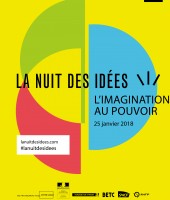Musique, imagination et émotions
Soirée animée par Lionel Naccache, neurologue et chercheur en neurosciences cognitives (ICM - Institut du Cerveau et de la Moelle épinière).
L’imagination dans le répertoire Haydnien
Julien Chauvin, Concert de la Loge / IEA de Paris
Du fait de sa figure de « Père de la Symphonie et du Quatuor », Joseph Haydn a gardé pendant de nombreuses années l’image d’un compositeur à l'œuvre « cérébrale » ou « théorique », termes à la connotation assez péjorative. Pourtant, sa musique se veut bien plus originale, amusante et suggestive qu’on ne le pense. A travers des exemples musicaux et des explications sur l’œuvre du compositeur autrichien, l’objectif de cette présentation interactive est de changer notre regard sur sa musique, en mettant l’accent sur son caractère créatif et la place qu’elle laisse à l’imagination de l’auditeur.
Music, imagination and the brain
Morten L. Kringelbach, Oxford / Aarhus University, résident 2015-2016 de l’IEA de Paris
Being able to anticipate future events is at the heart of being human and it has been proposed that we are in fact first and foremost prediction machines. On all levels, music works through what might be termed 'sweet anticipation', allowing us to transcend the tragic miracle of consciousness. I will discuss the research revealing the underlying brain mechanisms of prediction and prediction error related to music and in particular the ability of music to give rise not only to pleasure but also to meaning, and perhaps even Eudaimonia (a contented state of being happy and healthy and prosperous).
Musical Creativity in Medieval Paris
Catherine Bradley, résidente de l’IEA de Paris
The construction of Notre Dame Cathedral in late twelfth-century Paris inspired comparable activity in the sphere of musical composition: the creation of a new and ground-breaking repertoire of music to be sung at liturgical celebrations in Notre Dame. Not only did composers create large-scale polyphonic works (that is, compositions in multiple musical voices, in contrast to simple monophonic plainchant melodies), but they also developed new systems of recording these works in writing, preserving them for posterity in sumptuous manuscript sources.
This presentation demonstrates the creativity and ingenuity of musical creators in twelfth- and thirteenth-century Paris. It also challenges the assumption that scared music is necessarily solemn or serious, showing how medieval composers also used church melodies in combination with secular texts in French to ironic and humourous effect.
|
Benedicamus Domino (800-1500) 01 septembre 2017 - 30 juin 2018 Music and dance in brain and body 25 mars 2016 - 25 avril 2016 |
|
|
|
Conférences de J. Chauvin (Concert de la Loge / IEA de Paris), C. Bradley (résidente 2017-2018 de l'IEA de Paris) et M. Kringelbach (résident 2015-2016 de l'IEA de Paris), dans le cadre de la Nuit des Idées, organisée par l'Institut français |
|
|




